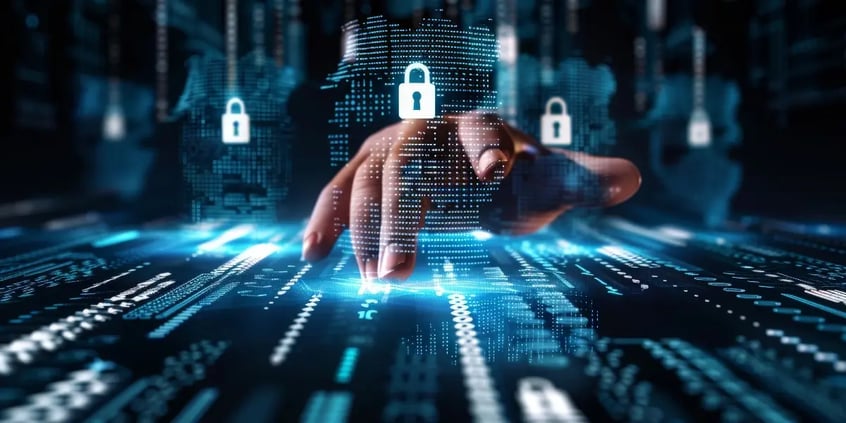
It’s 2025, and cyber attackers aren’t just guessing passwords anymore — they’re bypassing entire systems.
Despite years of security awareness, a staggering number of organizations still rely on single-layer security or outdated MFA authentication methods that can no longer keep up with modern threat vectors.
The result?
Account takeovers, ransomware intrusions, insider breaches, and millions lost — not because organizations lacked MFA, but because their MFA was weak, inconsistent, or poorly implemented.
The illusion of safety often proves more dangerous than the absence of protection itself. It’s time to expose the hidden cost of weak MFA — and how to fix it before it costs your business its credibility, compliance, and customer trust.
The False Sense of Security: When MFA Fails to Deliver
You’ve implemented MFA. Great — but here’s the truth: not all MFA authentication is created equal.
Too many organizations settle for the bare minimum — typically SMS-based OTPs or email verification codes — assuming that’s enough. Unfortunately, these are the easiest forms of MFA to breach through phishing, SIM swapping, or malware injection.
While Microsoft reports that MFA can block 99.9% of automated attacks, that number only applies to properly implemented MFA frameworks. Weak MFA offers the illusion of protection while leaving enterprises exposed to credential theft, insider misuse, and compliance violations.
The message is clear: weak MFA doesn’t strengthen security — it silently weakens trust.
Understanding the 3 Types of Multi Factor Authentication
Before strengthening MFA, it’s essential to understand the 3 types of multi factor authentication and their roles in securing digital identities.
1. Knowledge-Based Factors (Something You Know)
-
Examples: Passwords, PINs, or security questions.
-
Risk: These are the most vulnerable factors — easily guessed, reused, or stolen through phishing or credential dumps.
2. Possession-Based Factors (Something You Have)
-
Examples: Smart cards, OTP tokens, or authentication apps.
-
Risk: Subject to SIM swapping, malware injection, or device theft, especially if not paired with additional layers of verification.
3. Inherence-Based Factors (Something You Are)
-
Examples: Biometric identifiers like fingerprints, face recognition, or voice patterns.
-
Risk: Requires advanced integration and hardware, but delivers the highest level of assurance when combined with contextual verification.
A strong MFA authentication framework blends these factors intelligently — combining them with contextual risk analytics to verify users dynamically, based on behavior, device, and environment.
The Real Cost of Weak MFA
Weak MFA isn’t just a technical flaw — it’s a business risk that carries measurable financial and reputational costs.
1. Financial Losses
According to IBM’s Cost of a Data Breach Report 2024, breaches caused by weak or misconfigured MFA cost companies an average of $4.5 million per incident.
2. Regulatory Penalties
Non-compliance with global and regional frameworks such as GDPR, ISO 27001, or RBI cybersecurity guidelines can result in hefty fines and loss of operating licenses.
3. Operational Downtime
Account takeovers or ransomware events triggered by weak MFA can halt business operations for days, damaging productivity and revenue.
4. Reputational Damage
In an era where digital trust drives customer loyalty, losing user data equals losing customer confidence — often permanently.
Weak MFA costs more than it saves, eroding both profit and credibility.
Why Modern Businesses Need Adaptive MFA
Traditional MFA authentication is static — it prompts for the same verification factors every time. But cyber threats are dynamic and constantly evolving. Attackers use AI-driven phishing, credential stuffing, and social engineering to outsmart static defenses.
That’s why enterprises in 2025 need Adaptive MFA — a context-aware, risk-based authentication model that continuously evaluates login attempts in real time.
Adaptive MFA works by:
-
Evaluating login context (device, location, network, time of access).
-
Detecting anomalous behavior (unusual IPs, sudden location shifts, or device changes).
-
Applying dynamic verification — enforcing additional authentication only when risk is detected.
-
Integrating with risk engines and IAM systems to prevent misuse of legitimate credentials.
The outcome? Frictionless yet uncompromising security — verifying users the right way, at the right time, for the right reasons.
MFA and Zero Trust: A Match Made for 2025
In 2025, Zero Trust is the gold standard of cybersecurity — and MFA is its cornerstone.
Zero Trust operates on the principle of “never trust, always verify.” It assumes that every user, device, and session could be compromised until proven otherwise.
In this framework, MFA authentication provides the continuous verification backbone — ensuring that every identity, device, and access request is authenticated and authorized in real time.
By integrating Adaptive MFA with Zero Trust architectures, organizations can:
-
Prevent unauthorized access even if credentials are compromised.
-
Apply granular access policies based on real-time user risk scores.
-
Extend secure access to remote users, partners, and third-party applications.
It’s no longer about “trust but verify.”
In today’s world, it’s verify — always, and everywhere.
How eMudhra Strengthens MFA Authentication for Modern Enterprises
At eMudhra, we believe trust should be seamless, but never optional.
Our enterprise-grade multi-factor authentication solutions are built on years of expertise in digital identity, PKI, and IAM, combining security, scalability, and usability to deliver authentication that empowers — not frustrates — your workforce and customers.
Here’s how eMudhra’s MFA authentication framework helps businesses stay ahead:
-
Comprehensive Factor Support:
Multiple authentication options including OTP, biometric, push notifications, hardware tokens, and smart cards — all configurable for diverse enterprise environments. -
Adaptive Authentication:
AI-driven risk analysis enforces additional authentication layers dynamically based on user behavior, device integrity, and threat levels. -
Seamless Integration:
eMudhra’s MFA integrates effortlessly with IAM systems, VPNs, cloud platforms, and digital signing tools — ensuring consistent, cross-platform protection. -
Regulatory Compliance:
Designed in alignment with GDPR, RBI cybersecurity mandates, NESA, ISO 27001, and ETSI, ensuring enterprises meet global and regional security benchmarks. -
Frictionless User Experience:
Advanced authentication mechanisms minimize login friction while maintaining uncompromising security for end-users.
Whether securing remote access, customer onboarding, or sensitive enterprise workflows, eMudhra’s MFA authentication protects identities, ensures compliance, and strengthens trust across every digital touchpoint.
Fixing Weak MFA: The Practical Path Forward
If your current MFA strategy still depends on passwords and SMS codes, it’s time to modernize your authentication landscape.
Here’s how to fix weak MFA — before it’s too late:
-
Assess Current MFA Effectiveness:
Evaluate your MFA framework across all applications and endpoints. Identify weak factors, inconsistent policies, and unprotected systems. -
Adopt Adaptive MFA:
Introduce risk-based, context-aware authentication that dynamically applies security based on user behavior and threat context. -
Enforce MFA Everywhere:
Protect endpoints, cloud apps, privileged accounts, and partner access — without exceptions. -
Automate with IAM Integration:
Integrate MFA with identity and access management (IAM) platforms for centralized visibility, governance, and control. -
Continuously Audit and Update:
Attack vectors evolve; so should your authentication methods. Regularly test, audit, and refine MFA policies and configurations. -
The goal isn’t just to deploy MFA — it’s to make it resilient, intelligent, and adaptive.
The Cost of Weak MFA Isn’t Just Security — It’s Trust
In today’s digital-first world, cybersecurity is no longer just a compliance requirement — it’s the foundation of trust.
Weak MFA doesn’t just open security gaps; it undermines confidence in your digital ecosystem. Every failed login, every breach, every phishing success chips away at customer faith and organizational credibility.
With eMudhra’s multi-factor authentication framework, enterprises can transform MFA from a vulnerability into a strategic advantage — one that fuels Zero Trust adoption, enhances regulatory compliance, and strengthens digital trust across every transaction.
Because in cybersecurity, the real cost of weak MFA isn’t measured in money — it’s measured in trust.
👉 Discover how eMudhra’s MFA authentication can help your enterprise build a secure, adaptive, and trust-driven digital future — before weak MFA costs you more than you think.
